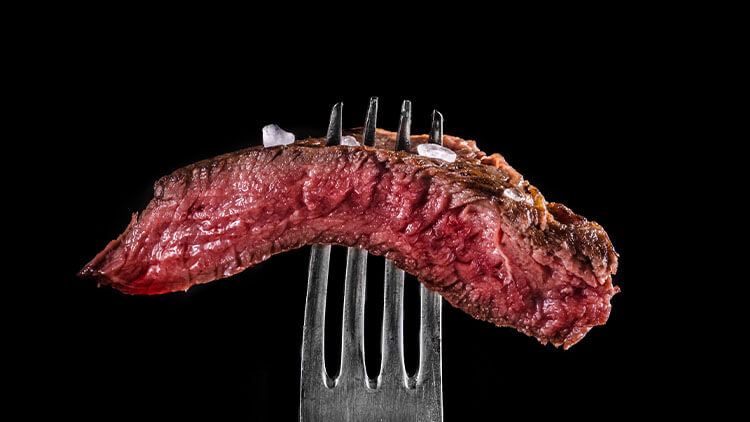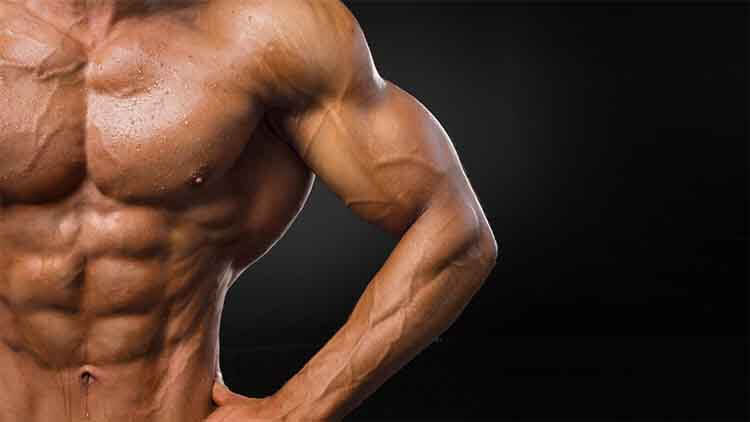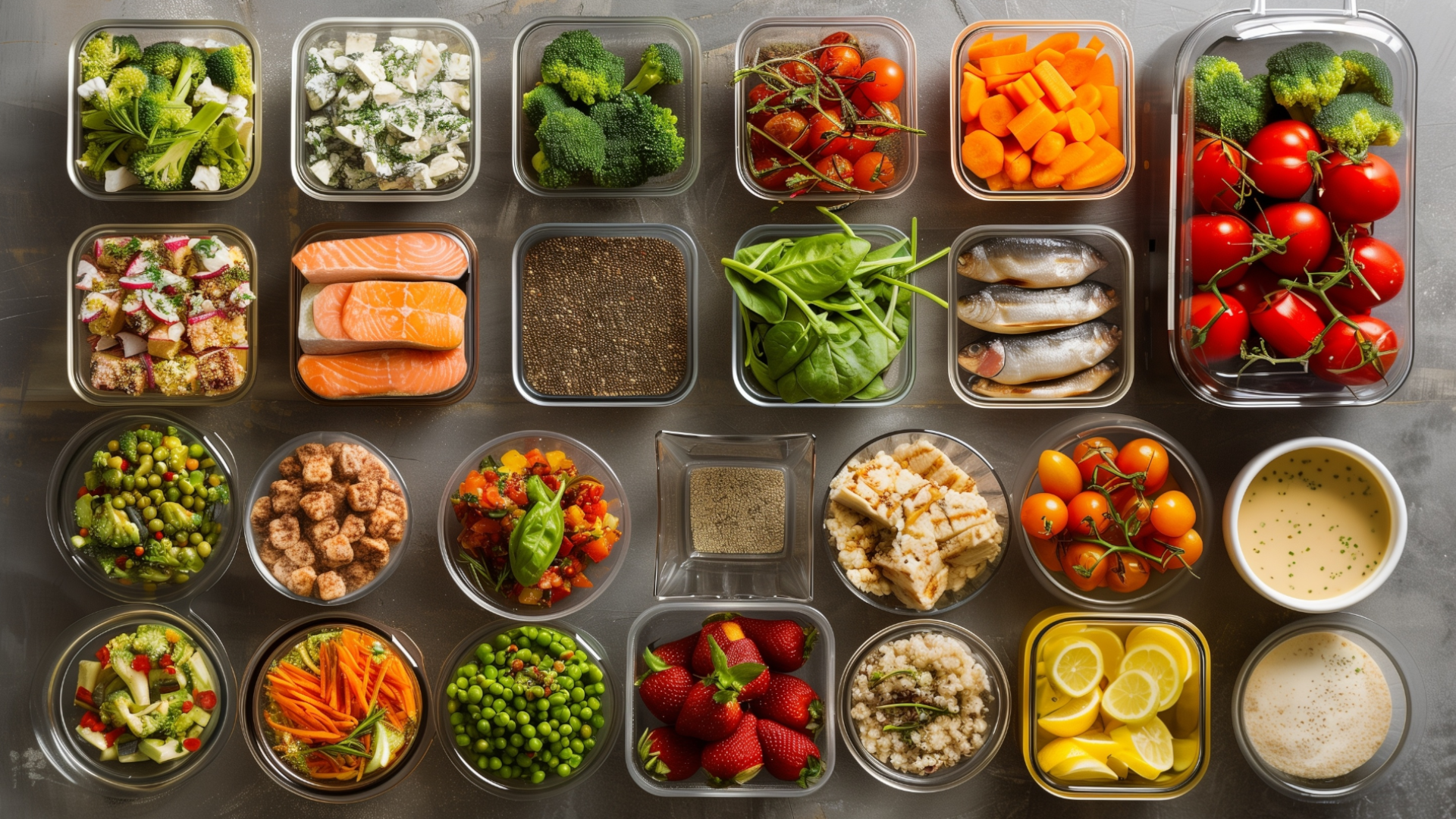If you’re serious about bodybuilding, then you’ve probably already wondered – how is it possible to become a fat burning machine without having to sacrifice your muscles?
And that is the big question. With so many diets contributing towards muscle loss – but being necessary in order to cut fat and look ripped – it can be hard to find the right balance.
So, what can you do? How can you get the best of both worlds? Simple – adopt an anabolic diet.
According to the experts, anabolic fasting can help you to achieve your goals – faster – WITHOUT your muscle mass wasting away. But is there any truth to these claims? Let’s find out…
- What is the anabolic diet?
- How the anabolic fasting diet works?
- What can you eat on this anabolic fasting diet?
- Phases of the Anabolic diet
- How to start the anabolic diet?
- Weekly anabolic diet meal plan
- Benefits of anabolic fasting diet
- Risks and downfalls of the anabolic diet

What is the anabolic diet?
Often referred to as ‘anabolic fasting’ or the ‘anabolic fasting diet’, this low carb diet basically encourages you to alternate between days of low carb and high carb consumption.
This way, you can maximize fat loss, keep your fat stores low, and more importantly pile on the muscle.
In other words, instead of burning carbs for fuel, DiPasquale’s diet mimics the effect of anabolic steroids – without the nasty side effects – by forcing your body to cycle carbohydrates.
The Science
The idea behind the anabolic fasting diet is to force your body to switch modes and choose to burn fat for energy instead of carbs.
In doing so, not only will your stores of body fat fall; you will also notice drops in hunger and cravings making it easier for you to diet.
In addition to weight loss, anabolic fasting will also encourage changes in strength and total testosterone.
How the anabolic fasting diet works?
Anabolic diets comprise of five days of consuming low carb (less than 30g a day), high fat and high protein meals, followed by two days of eating high carb, moderate protein and very low fat meals.
By alternating your eating habits in such a way, it changes your metabolism to the point where it favors burning fat for fuel – instead of carbs – whilst preserving your muscle mass (as much as possible).
Another bonus to altering your metabolism this way, is that you’re not burdened with calorie restrictions.
Yes, you still need to keep an eye on your carb and fat intake, but in terms of overall calories, you can still eat a normal amount (daily) whilst still benefiting from falls in body fat percentage. Perfect!
And this is great news, because aside from escaping the hum-drum of calorie counting – and we all hate that – it also means you are still eating plenty of calories to help maintain lean body tissues and muscle mass.

How does it work?
The precise science behind why anabolic fasting works so effectively is down to its macronutrients.
Now, typically our bodies rely on carbs for energy as they are a source of glycogen.
This means, when you only eat a small amount of carbs (during those five days), this will lead to a higher amount of fat oxidation, as well as improvements in your body composition.
By then following with two days of a high carb intake, this will replenish your glycogen stores and ensure you’re gym ready for the following week.
Yet, your carb intake isn’t the only thing to influence your body…
Take for instance protein. You’ll have noticed that your protein consumption is roughly the same the entire week.
This is on purpose to ensure that you have constant access to enough proteins – and their amino acid stores – to guarantee the successful stimulation of muscle protein synthesis.
Now, normally carbs help improve protein absorption rates. That is why your entire week cannot be all low carb…
You need these two days of high carb, moderate protein and low fat to ensure glycogen resynthesis, muscle protein synthesis and general recovery in order to prep you for your next cycle.

What can you eat on this anabolic fasting diet?
Naturally, what you eat on this diet will depend on the day of the week.
For those five low carb days, you need to make sure that you eat plenty of foods that are high in protein and fat, as these will be your two predominant macronutrients.
How Much Protein To Build Muscle
Yet, you need to be careful that you don’t get carried away with these – especially protein – as too much will cause your body to convert excess protein into glucose (through gluconeogenesis).
And this is NOT something you want to happen…
For every 100g of extra protein you consume, it will result in 58g of extra glucose in your body, which you will have to add to your carb intake – making your diet no longer a low carb one.
And it is important that you keep your carb consumption low to stop your body from switching back to glucose for energy as this can trigger feelings of fatigue and dizziness (during the switch).
So what should you eat on your low carb, high fat and high protein days?
For starters you should limit your daily carb intake to 30g, whilst balancing the rest of your diet based on having 60-65% fat, 30-35% protein and 5-10% carbs.
Luckily, you can easily manage this with the help of the following foods:
Meat (including fatty red meats)
Meat as a whole will supply you with plenty of saturated fat.
Now, despite previous theories that you should keep saturated fat to a minimum, studies are now finding that it can help normalize testosterone levels and regulate androgen production…
Which is good news for you as this will help you in the retention and building of muscle mass!
Our meaty suggestions include your typical red meats and poultry i.e. beef, lamb, pork, salami, sausage, ham, chicken and turkey, etc…

Fish
Alongside taking 6g of fish oil every day, you can also enjoy munching on some tuna, salmon, tilapia and mackerel as well as shellfish (prawns, crab, shrimp, lobster, etc.)
Dairy
Dairy products such as cheese, cream and butter are fine as long as you monitor their carb content as some tend to be fairly high.
Similar to meats and nuts, dairy can provide you with healthy fats.
Fats
Olive oil, butter, fish oil, etc.
Vegetables
You’re fine to eat any veg aside from those which are high in starch such as carrots, peas, corn and potatoes.
The rest you can eat in abundance as they will help to make you fuller, faster whilst helping you to manage your calorie and nutrient intake.
We suggest sticking to green, leafy vegetables as these contain very few carbs but are high in fiber and micronutrients e.g. broccoli, spinach, cucumber, celery, asparagus, avocado, green beans and peppers.
Nuts and nut spreads
These are another good source of fats. We recommend nibbling on almonds, peanuts, cashews, walnuts and pecans.
Whole eggs
Fruits
You shouldn’t have these in excess because whilst they are low in carbs, they can easily push you over if you’re not careful.
To be on the safe side we recommend adding these fruits to your daily allowance e.g. berries (strawberries, blueberries and blackberries) and watermelon.
TIP: make sure you don’t accidentally eat ‘hidden carbs’ i.e. breadings and sauces.

What about your high carb, moderate protein and low fat days?
During your high carb phase, your calories should be split 60-80% carbs, 10-20% fat and 10-20% proteins.
You also need to make sure that the carbs you do have come from healthy sources. Otherwise you can enjoy any of the following foods:
- Breads
- Rice
- Pasta
- Fruit
- Potatoes
- Quinoa
- Pancakes
- Oats and milk

Phases of the Anabolic diet
Okay, you’ve now got a pretty decent idea of ‘what is anabolic fasting’. But how should you best divvy up your time? How can you achieve optimal anabolic diet results?
Simple: you keep to the following three cycles.
As you’ll soon discover – each phase aims to bring you one step closer to achieving a shredded, chiselled physique.
Induction phase
This initial phase is designed to help orient your body to the type of stress, recovery and performance you can expect from this diet. You could even say it is a trial run, as it allows you to test the waters.
Yet, it is important that you take this phase seriously, as the anabolic diet is vastly different from anything you’ve ever tried before.
That is why, you should always stay consistent with your anabolic diet meal plan for one month to ensure that you’ve fully adjusted to this dietary change.
True, you won’t see massive changes to your strength or body comp during this phase – as the purpose of this phase is to get your body to adhere to the diet – however it will be worth it in the long run.
How does this phase work: you basically keep to the 5+2 day format for 4-6 weeks. This will give your body plenty of time to condition itself to the stress that comes with this type of diet.
TIP: your calorie intake should be 18 times your bodyweight in pounds.

Bulk phase
This phase should NOT be skipped, even if your intention is to lose weight, as it is essential that your body enters into highly anabolic states to prevent muscle loss.
And it can only do that if you keep this phase within your cycle.
So yes, whilst bulking is traditionally designed to help you put on as much clean weight as you can before you cut; it is vital that you keep to the following strategy:
- Eat 20-25 calories per pound of bodyweight.
- Keep to this bulking phase for 3-4 weeks (or until you’ve achieved the level of muscle tissue that you want).
- According to DiPasquale, you should add 15% (in mass) to your ideal body weight.
NOTE: if you’ve got no interest in piling on muscle – and don’t mind losing muscle density – then you can go straight to the cutting phase after the induction one.

Cutting phase
This is the phase where you’ll really start to see anabolic diet results. You see, during your bulking phase, you probably felt like you had a surplus of energy.
Well, this phase will cause you to lose weight, burn fat more efficiently, and achieve an overall better competition-ready body.
To get started, you will need to create a strict calorie deficient of 30-35% – based on your new weight – whilst still maintaining your macronutrient balance.
From here, you should only lose 1-1.5lbs per week. If you’re losing more than this then you will need to up your calorie intake, and vice versa if you aren’t losing anything.
By the end, you should achieve a body fat percentage of less than 10%.
PLEASE NOTE: whilst each of these phases expects you to stick to a different calorie intake, your macronutrient portions (how they are divvied up) should NEVER change.

How to start the anabolic diet?
This question is not as silly as it looks. Sure, you could jump straight in, but if you want to escape the common hiccups of dieting – plus ensure you fully adapt to the stresses of this diet – then we recommend that you bear the following points in mind:
1 – Figure out all of your goals first
Depending on your weight loss, fat loss and muscle gain goals, there WILL be a difference in your calorie consumption. So before you do anything, you need to consider your goals.
What do you want to achieve?
A good starting point, is having an idea of your overall body composition. This will give you a baseline measurement of your overall fitness.
To work this out, we suggest taking advantage of a hip/waist ratio calculator. This will give you a reliable measurement of your body comp.
2 – Alter your training program
Truthfully, you will struggle to do any type of workout within the first 1-2 weeks of this diet, as you won’t have the energy to do it justice.
Instead, you need to give your body time to adjust to the different levels of glycogen in your muscles, and learn how to better utilize the carbs that you consume at the weekend.
We suggest restructuring your workout regime so that your most difficult and strenuous workouts fall 24-48 hours after you’ve consumed 1-2 days of your high carb diet i.e. at the weekend.
This will ensure that your body gets used to training hard on days where more glycogen is available, and will make it more efficient at using this amount, when provided.
3 – Starting the diet
Remember how we mentioned that the induction phase is designed to get you into the fat burning mode quickly?
Well, naturally your diet will be stricter during this phase than it is the rest of the time, meaning there is a risk that you’ll experience some dizziness, fatigue and mental fogginess.
NOTE: these symptoms usually disappear 24-48 hours after your body has made the switch from operating on carbs to fats.
4 – Get the right carb balance
During your high carb phase, stick to 5-8g per pound of body weight.
8g is only okay if you’ll be exercising a lot during the week and are going to completely deplete your stores. Whilst 5g is better if you’ll only be moderately exercising i.e. are not performing as much volume.

5 – Water weight
Don’t worry if you experience some weight gain after carb loading, as this is likely to be water weight which will go away once you return to your normal diet.
Weekly anabolic diet meal plan
Given how demanding this diet can be on your body, we can’t blame you for wanting to see a meal plan. Especially if you’re struggling to take all of the above advice in and turn them into yummy meals.
To get you started, here is a typical anabolic diet meal plan.
Meal Plan One: Monday to Friday
Calories – 2,300 per day
Fats – 60-65% of your daily intake
Proteins – 30-35% of your daily intake
Carbs – 5-10% of your daily intake
Breakfast: make an omelet using 3 whole eggs, 1oz. of cheddar cheese, 1tbsp oil and 2 turkey sausages.
Snack: blend 6oz of cottage cheese (1%) with 1tbsp almond butter, 1tbsp flaxseed meal and 1tbsp of oil. Alternatively, you can cook 4oz. of ground beef with 1oz. of cheese and add 2tbsp of peanut butter on the side.
Lunch: serve 4oz of cooked chicken breast with 1 hard-boiled egg, 2 cups of romaine lettuce, 2tbsp of oil and 2tbsp of vinegar.
Dinner: mix 1tbsp of flaxseed meal with 1tbsp of oil and 1/2tbsp of vinegar, toss with 2 cups of romaine lettuce, and serve with 4oz of cooked chicken breast.

Meal Plan Two: Monday to Friday
Meal 1 – 5 turkey bacon slices, 4 whole eggs scrambled and a handful of walnuts.
Meal 2 – Ground beef with shredded cheese (300g), 50g of cabbage leaves and a handful of almonds.
Meal 3 – 2 chicken breasts (8oz.), 100g of bacon bits, a handful of pistachios and Greek style salad with cheese (100g).
Snacks – zero carb protein bar, whole milk protein shake or beef jerky (a handful).
Weekend
Meal 1 – oatmeal with protein powder (1.5 cup, cooked), 2 large bananas and 2 large apples.
Meal 2 – 2 cups of basmati rice, 2 chicken breasts (8oz), 50g spinach and 100g of broccoli.
Meal 3 – 400g of cooked whole grain pasta, 200g lean ground beef or chicken and pasta sauce with vegetables (300ml).
Snack – sweet potato home fries (300g), 2 large bananas and 2 slices of grain bread with 50g of hummus.

Benefits of anabolic fasting diet
Honestly? Anabolic fasting is the perfect diet if you’re determined to shift that excess baggage and protect your muscles. It basically allows you to take full control of your cutting cycle and achieve the physique YOU want.
But what other benefits does the anabolic diet have to offer? Here are its top perks:
1 – Increased fat loss
Anabolic fasting forces your body to go through a fat oxidation phase which causes your body to switch from carbs to burning fat for fuel i.e. energy.
This means, if you’re carrying excess fat, you can use this diet to ramp up your fat burn and reduce your body fat percentage.
2 – Easy weight gain
Going on a high fat diet is the easiest way to put on weight, which is perfect when you’re trying to bulk. And that is the thing to consider with this diet.
Unless you do the cutting phase, you will NOT lose weight, as there are more calories per gram of fat than in other nutrients.
3 – Produces more testosterone and Growth Hormone
The reason this diet came into being is because of its ability to produce steroid-like effects.
You see, thanks to its high saturated fat content it can naturally increase your testosterone, growth hormone and IGF-1 levels.
4 – Count macros over calories
The biggest bonus to the anabolic diet is the fact that you don’t EVER have to calorie count. What matters instead is keeping track of your macronutrient ratios.
Risks and downfalls of the anabolic diet
It goes without saying that if you’re going to up your saturated fat content, then you’re going to see a rise in your cholesterol levels. And when that happens, there is an increased risk of heart disease.
But that is not the only con/risk that can come from this diet. You also need to be aware of:
1 – Low fiber intake
Restricting your carb intake five days a week will sadly lead to a lack of fiber.
Now this wouldn’t be such a bad thing if fiber wasn’t an indigestible source of carbs that can help to regulate your health – in particular your blood pressure levels. It can also hinder your ability to lose weight.
2 – Lack of energy/increased fatigue
Without a constant supply of carbs, you will feel lethargic and fatigued for the first couple weeks (until your body adapt to this carb loss).
3 – Acid indigestion and bloating
The problem with eating meat is that animal proteins and fats are hard to digest. In its stead, our body’s produce hydrochloric acid to help break them down (into smaller, digestible forms), but as a result you’re often left feeling bloated and ripe with indigestion.
4 – Time limit
Like anabolic steroids, the anabolic diet can only be done for a short period of time. Why? Because of the amount of seesawing that goes off between nutrients.
For instance, the anabolic diet is completely lacking in fiber and because of this imbalance, it will reduce your antioxidant intake; will encourage the growth of unhealthy gut bacteria, and can trigger constipation.
So whilst it is great if you’re trying to prep for a bodybuilding competition, you should NOT do this diet long term.
5 – Insulin problems
According to animal studies, insulin doesn’t work as well on this diet. This is because, in order for your body to metabolize carbs – yes, even the small amounts you’re eating – you need insulin.
High fat diets are renowned for causing insulin resistance, leading to an increased risk of heart disease, type 2 diabetes and metabolic syndrome.

Conclusion
So what is anabolic fasting? Is it worth pursuing?
Honestly, it depends on your goals. For instance, if your mission is to bulk up, cut fat and preserve muscle, then the anabolic diet is a fantastic way to earn these results fast.
However, if you’re looking for a long term diet or have no intention of cutting, then this diet is far from ideal as 1) it isn’t healthy for long term use, and 2) it WILL cause you to put on weight.
So like we said – it all depends on what you’re hoping to achieve.
Yet, one thing that is clear after reviewing the anabolic fasting diet is that it can go a long way towards helping you to cut successfully, eliminate body fat, and get competition ready.
Even more so, if you pair it with any of CrazyBulk’s natural anabolic steroid alternatives, as together they can help your body to respond more efficiently to this metabolic change.
For more information on how to achieve rock hard abs and a chiselled physique you can check out CrazyBulk here; or you can go straight to the product finder:
Over 299,434 purchases
Over 509,389 bottles sold
Over 30,563,340 pills taken








